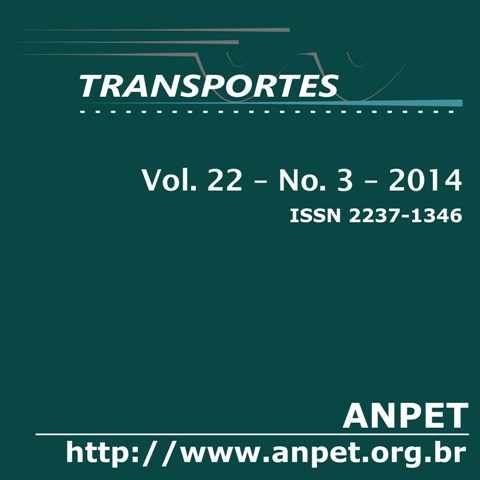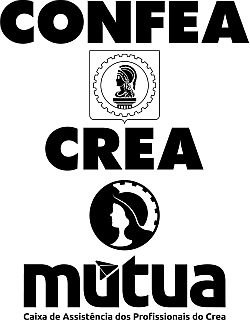Métodos de identificação de zonas de acumulação de acidentes: Revisão e aplicação a um caso de estudo
DOI:
https://doi.org/10.14295/transportes.v22i3.813Keywords:
Highway Safety Manual. Road safety. Hotspot. Performance measure. Intersections.Abstract
This paper presents a description of the various methods proposed by the Highway Safety Manual (HSM) to identify hotspots. In fact, this manual has become a tool for the professional in road safety all over the world. The HSM suggest and described 13 distinct methods in terms of application context and method complexity. Therefore, the main goal of this paper is to describe and organize those methods to help safety professionals to select the method(s) to apply to the study case. Thus, the various methods are organized based on 3 application criteria, which may be crucial to the decision process. In addition to the HSM methods, a recent method entitled probit binary model is also shown. An application to the Porto city is presented in order to better analyze each method. In fact, based on this study case, it was concluded that not all of the methods were possible to apply to this study case. A comparison of the various methods is developed using tests to assess the performance of each method. The methods named excess predicted average crash frequency proposed by the manual and the binary probit model, recently developed, present the best results based on those tests. The results of the case study application may be the basis for future applications in other regions and/or countries.Downloads
References
AASHTO (2010) Highway Safety Manual. American Association of State Highway and Transportation Officials, Washington DC. ISBN: 978-1-56051-477-0
Bandyopadhyaya, R. e Mitra, S. (2011) Comparative Analysis of Hotspot Identification Methods in the Pres-ence of Limited Information. 3rd International Conference on Road Safety and Simulation Transportation Research Board, Indianapolis, USA.
Cafiso, S. e Silvestro, G. D. (2011) Performance of Safety Indicators in Identification of Black Spots on Two-Lane Rural Roads Transportation Research Record: Journal of the Transportation Research Board, 2237, 78-87. DOI: 10.3141/2237-09
Chen, Y., Persaud, B. e Sacchi, E. (2012) Improving Transferability of Safety Performance Functions by Bayesian Model Averaging. Transportation Research Record: Journal of the Transportation Research Board, 2280, 162-172. DOI: 10.3141/2280-18
Cheng, W. e Washington, S. (2008) New Criteria for Evaluating Methods of Identifying Hot Spots. Transporta-tion Research Record: Journal of the Transportation Research Board, 2083, 76-85. DOI: 10.3141/2083-09
Coll, B., Moutari, S. e Marshall, A. H. (2013) Hotspots identification and ranking for road safety improvement: An alternative approach. Accident Analysis & Prevention, 59, 604-617. DOI: 10.1016/j.aap.2013.07.012
Couto, A. e Ferreira, S. (2013) Método Probabilístico para Identificação de Zonas de Acumulação de Acidentes. Confederação Nacional do Transporte, Brasilia, Brasil. ISBN - 978-85-99082-18-8
Elvik, R. (2008) Comparative Analysis of Techniques for Identifying Locations of Hazardous Roads. Transportation Research Record: Journal of the Transportation Research Board, 2083, 72-75. DOI: 10.3141/2083-08
Ferreira, S. e Couto, A. (2012) A Probabilistic Methodolo-gy for Hot Spot Identification. TRB 2012 Annual Meeting, Transportation Research Board, Washington DC, USA, 16 pages.
Ferreira, S. e Couto, A. (2013) Hot-spot Identification: a Categorical Binary Model Approach. Transportation Research Record: Journal of the Transportation Research Board, 2386, 1-6. DOI: 10.3141/2386-01
Geedipally, S. R. e Lord, D. (2010) Identifying Hot Spots by Modeling Single-Vehicle and Multivehicle Crashes Separately Transportation Research Record: Journal of the Transportation Research Board, 2147, 97-104. DOI: 10.3141/2147-12
Geurts, K., Wets, G., Brijs, T. e Vanhoof, K. (2004) Identi-fication and Ranking of Blackspots: Sensitivity Analysis Transportation Research Record: Journal of the Transportation Research Board, 1897, 34-42. DOI: 10.3141/1897-05
Hauer, E., Allery, B., Kononov, J. e Griffith, M. (2004) How best to rank sites with promise. Transportation Research
Record: Journal of the Transportation Research Board, 1897, 48-54. DOI:10.3141/1897-07
Kononov, J. (2002) Identifying Locations with Potential for Accident Reductions: Use of Direct Diagnostics and Pattern Recognition Methodologies. Transportation Research Record: Journal of the Transportation Research Board, 1784, 153-158. DOI: 10.3141/1784-19
Lan, B. e Persaud, B. (2011) Fully Bayesian Approach to Investigate and Evaluate Ranking Criteria for BlackSpot Identification. Transportation Research Record: Journal of the Transportation Research Board, 2237, 117-125. DOI: 10.3141/2237-13
Martins, J. C. (2013) Seleção de Interseções com Poten-cial de Redução da Sinistralidade - Aplicação do HSM. Master degree, Universidade do Porto.
Montella, A. (2010) A comparative analysis of hotspot identification methods. Accident Analysis and Prevention, 42, 571-581. DOI: 10.1016/j.aap.2009.09.025
Persaud, B., Lord, D. e Palminaso, J. (2002) Calibration and Transferability in developing accident prediction models for urban intersections. Transportation Research Record: Journal of the Transportation Research Board, 1784, 57-64. DOI: 10.3141/1784-08
Sacchi, E., Persaud, B. e Bassani, M. (2012) Assessing International Transferability of Highway Safety Manual Crash Prediction Algorithm and Its Components Trans-portation Research Record: Journal of the Transportation Research Board, 2279, 90-98. DOI: 10.3141/2279-11
Sawalha, Z. e Sayed, T. (2006) Transferability of accident prediction models. Safety Science, 44, 209-219. DOI: 10.1016/j.ssci.2005.09.001
Downloads
Published
How to Cite
Issue
Section
License
Authors who submit papers for publication by TRANSPORTES agree to the following terms:
- The authors retain the copyright and grant Transportes the right of first publication of the manuscript, without any financial charge, and waive any other remuneration for its publication by ANPET.
- Upon publication by Transportes, the manuscript is automatically licensed under the Creative Commons License CC BY 4.0 license. This license permits the work to be shared with proper attribution to the authors and its original publication in this journal.
- Authors are authorized to enter into additional separate contracts for the non-exclusive distribution of the version of the manuscript published in this journal (e.g., publishing in an institutional repository or as a book chapter), with recognition of the initial publication in this journal, provided that such a contract does not imply an endorsement of the content of the manuscript or the new medium by ANPET.
- Authors are permitted and encouraged to publish and distribute their work online (e.g., in institutional repositories or on their personal websites) after the editorial process is complete. As Transportes provides open access to all published issues, authors are encouraged to use links to the DOI of their article in these cases.
- Authors guarantee that they have obtained the necessary authorization from their employers for the transfer of rights under this agreement, if these employers hold any copyright over the manuscript. Additionally, authors assume all responsibility for any copyright infringements by these employers, releasing ANPET and Transportes from any responsibility in this regard.
- Authors assume full responsibility for the content of the manuscript, including the necessary and appropriate authorizations for the disclosure of collected data and obtained results, releasing ANPET and Transportes from any responsibility in this regard.










